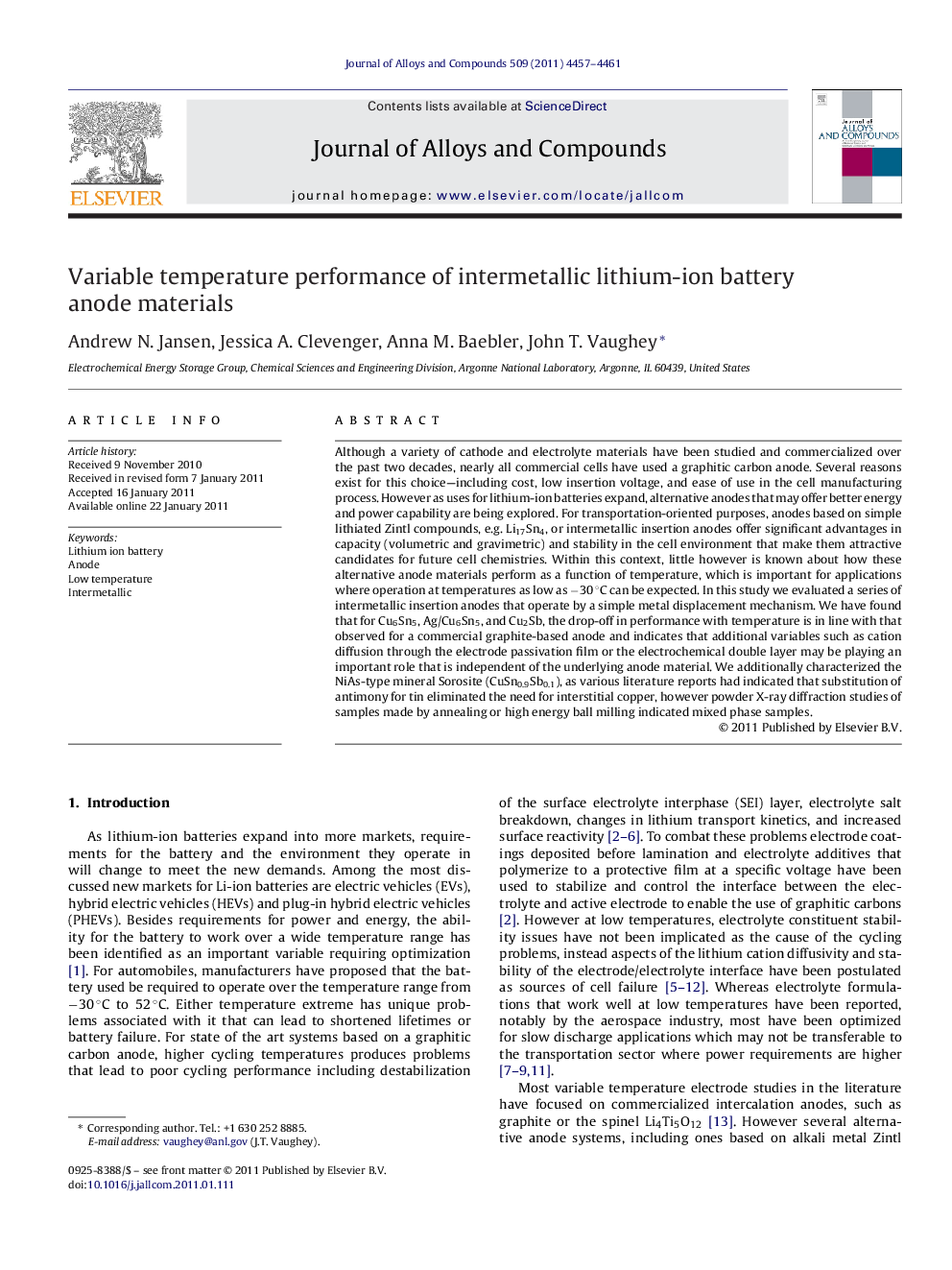| کد مقاله | کد نشریه | سال انتشار | مقاله انگلیسی | نسخه تمام متن |
|---|---|---|---|---|
| 1618097 | 1005700 | 2011 | 5 صفحه PDF | دانلود رایگان |

Although a variety of cathode and electrolyte materials have been studied and commercialized over the past two decades, nearly all commercial cells have used a graphitic carbon anode. Several reasons exist for this choice—including cost, low insertion voltage, and ease of use in the cell manufacturing process. However as uses for lithium-ion batteries expand, alternative anodes that may offer better energy and power capability are being explored. For transportation-oriented purposes, anodes based on simple lithiated Zintl compounds, e.g. Li17Sn4, or intermetallic insertion anodes offer significant advantages in capacity (volumetric and gravimetric) and stability in the cell environment that make them attractive candidates for future cell chemistries. Within this context, little however is known about how these alternative anode materials perform as a function of temperature, which is important for applications where operation at temperatures as low as −30 °C can be expected. In this study we evaluated a series of intermetallic insertion anodes that operate by a simple metal displacement mechanism. We have found that for Cu6Sn5, Ag/Cu6Sn5, and Cu2Sb, the drop-off in performance with temperature is in line with that observed for a commercial graphite-based anode and indicates that additional variables such as cation diffusion through the electrode passivation film or the electrochemical double layer may be playing an important role that is independent of the underlying anode material. We additionally characterized the NiAs-type mineral Sorosite (CuSn0.9Sb0.1), as various literature reports had indicated that substitution of antimony for tin eliminated the need for interstitial copper, however powder X-ray diffraction studies of samples made by annealing or high energy ball milling indicated mixed phase samples.
Research highlights
► Copper containing intermetallic compounds as anodes for lithium ion batteries.
► Variable temperature rate performance determined.
► Mechanism of lithium insertion plays little role in low temperature performance.
► Amount of copper displaced is key factor in rate capability at low temperature.
Journal: Journal of Alloys and Compounds - Volume 509, Issue 13, 31 March 2011, Pages 4457–4461